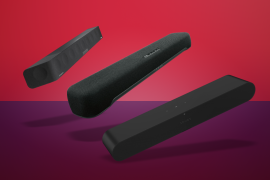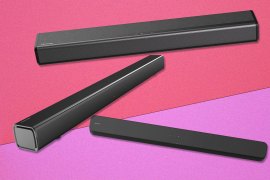Kanto Audio Ren review: Hi-Fi meets home theatre
Bookshelf speakers built with your TV in mind

Stuff Verdict
These bookshelf speakers have TV-friendly connectivity and can outshout most soundbars. The Kanto Audio Ren also look sharp on a desk, and are equally dynamic as a stereo pair.
Pros
- Engaging, entertaining stereo sound
- Lots of connectivity options for TV and Hi-Fi
- Sleek stylng stands out from other bookshelf speakers
Cons
- You forego surround sound with these hooked up to your TV
- Adding a subwoofer brings extra expense
- No hi-res Bluetooth codecs
Introduction
You might think a pair of bookshelf speakers are about as far removed from home theatre systems as it gets, but Canadian brand Kanto Audio says otherwise. The $599/£599 Ren wants to be your first choice for movies as well as music, with an HDMI input so it can play nicely with TVs as well as turntables.
Modern looks and eye-catching colour options are also sure to make it stand out over a traditional soundbar or surround sound setup in front of your TV, and it has the wired connections to replace a stack of hi-fi separates. So while it doesn’t have the streaming smarts of one box systems like the Cambridge Audio Evo One or Ruark R410, it could still be the multipurpose musical upgrade you’ve been waiting for. Here’s how it performed after a month of testing.
How we test Hi-Fi products
Every speaker, amp and Hi-Fi separate reviewed on Stuff is used for a minimum of a week’s worth of daily listening. We use a playlist of test tracks made up of multiple genres to assess sound, and use our years of experience to compare to other models. Manufacturers have no visibility on reviews before they appear online, and we never accept payment to feature products.
Find out more about how we test and rate products.
Design & build: by the book
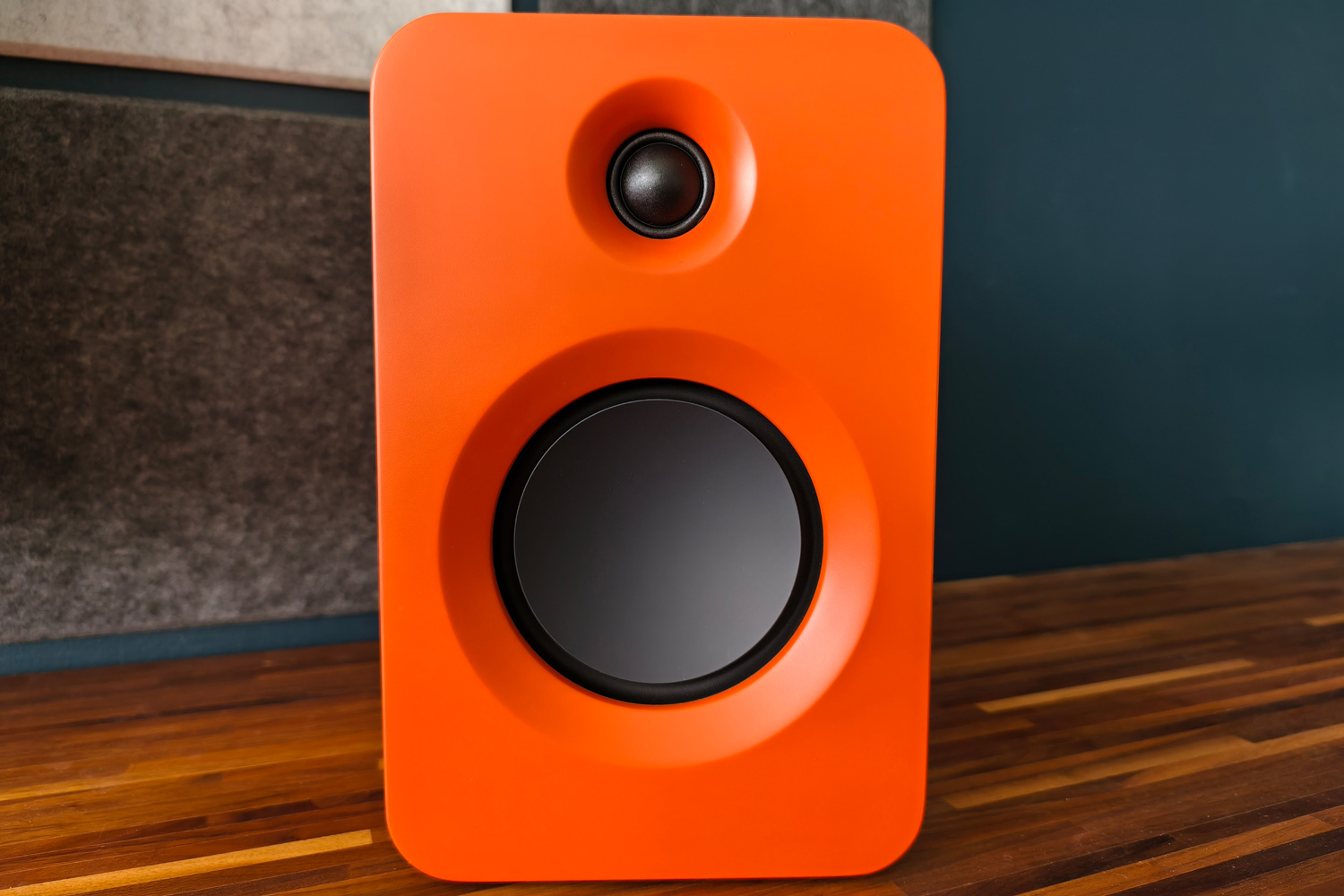
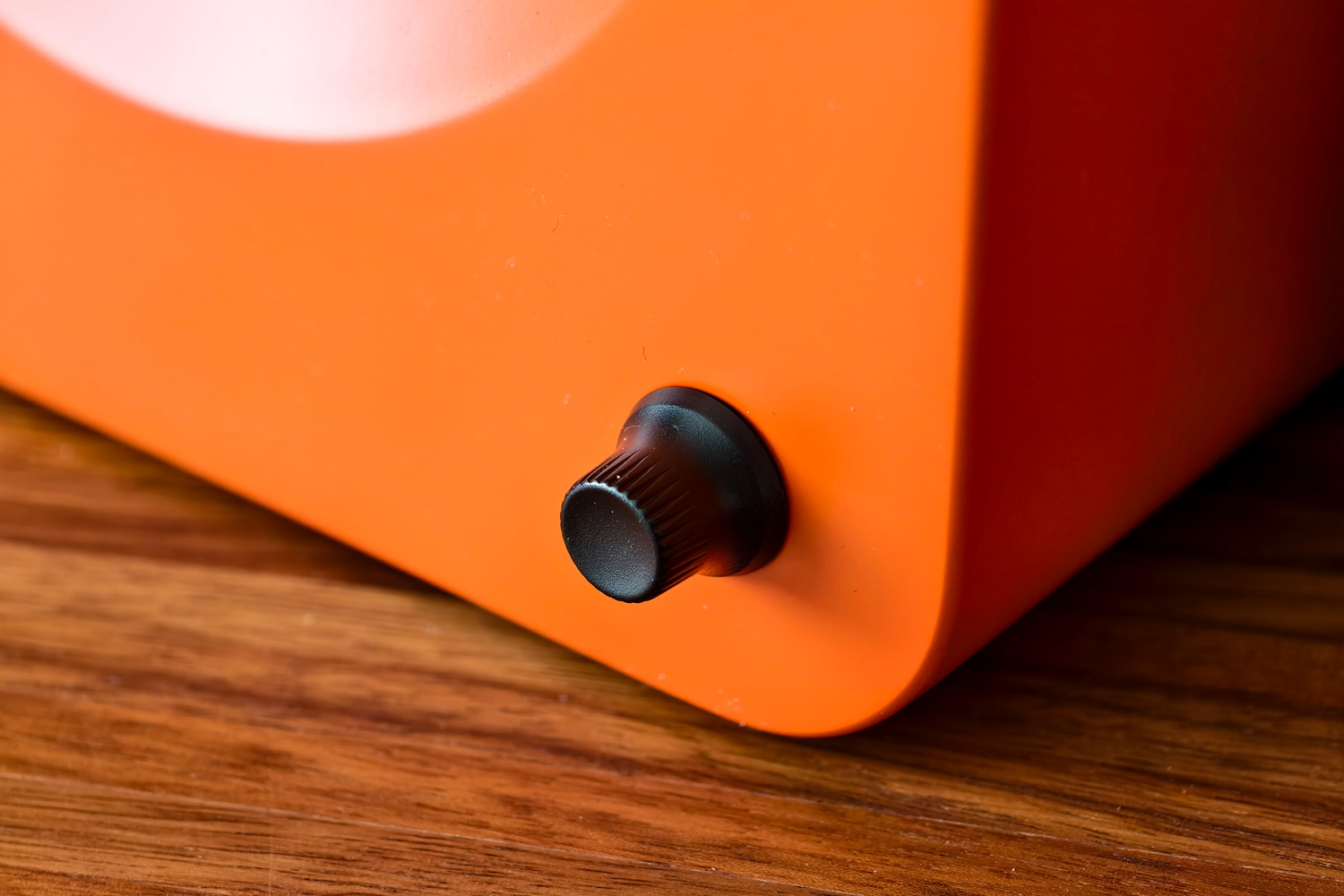
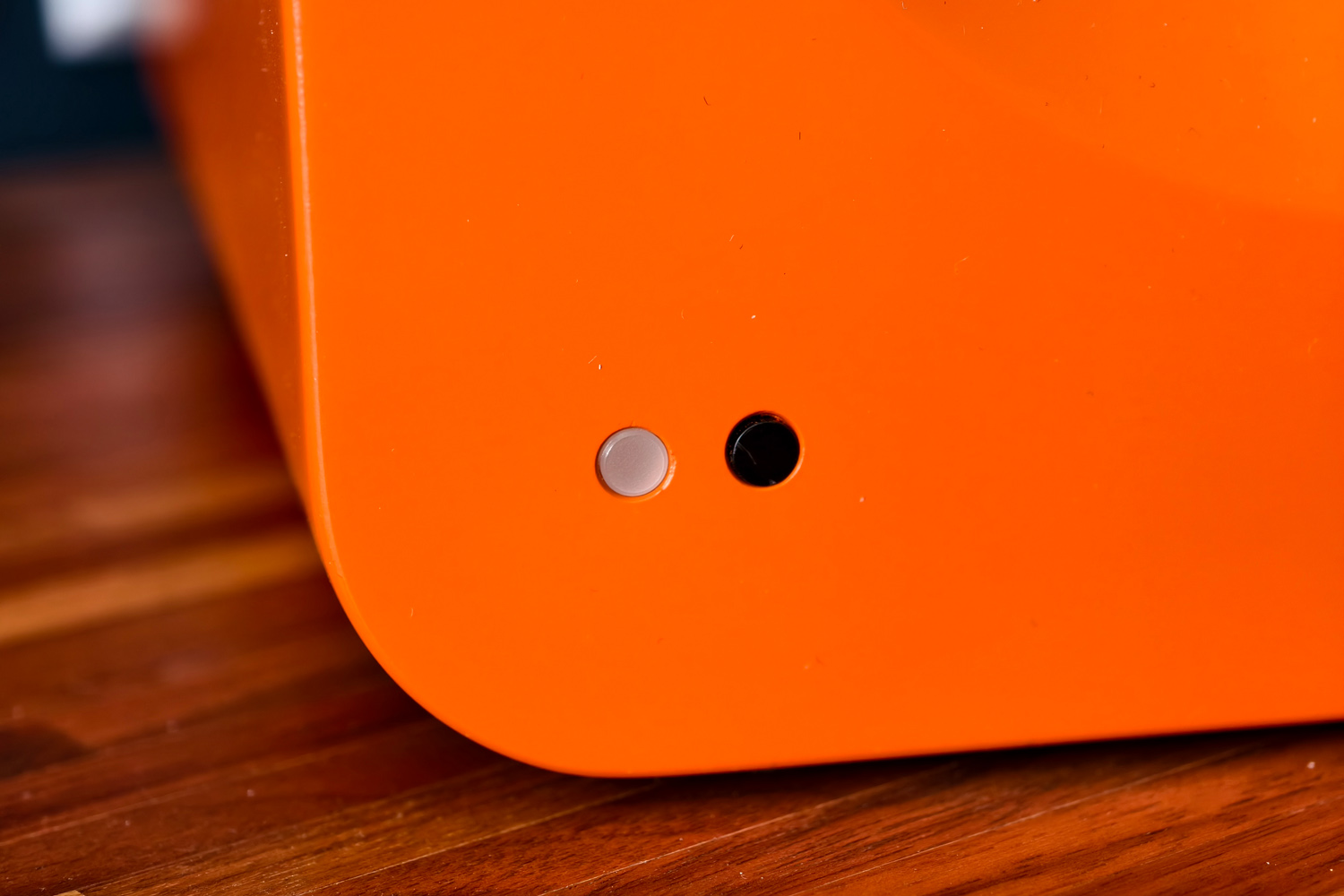
Most bookshelf speakers are boxy and, if I’m honest, a little boring. It’s great to see Kanto mix things up a bit with rounded corners and countersunk speaker cones. Things are even more minimal once the magnetic speaker grilles are clipped into place. There’s just a (dimmable) activity LED, IR receiver and multifunction dial on the main speaker, and the other one is completely bare.
It helps that my review unit arrived in a very fetching orange hue. White, Blue, Grey and Black are also on offer; all have a matte finish that’s not the best at shrugging off fingerprint muck, but I’ll still take it over the walnut and dark wood veneers most bookshelf speakers tend to favour.
These are substantial speakers; I couldn’t actually fit them on a slightly slimmer bookshelf, and they won’t look out of place flanking a 55in or larger TV. Plan on placing them on your desktop? Make sure you’ve got plenty of room either side of your laptop or monitor. If you’re going to wall mount, check those brackets are well anchored.
Kanto has a handful of desktop and floor stands that’ll compliment these well, but as long as you get the dimensions right there’s nothing to stop you from using generic stands instead. There’s a generous spool of speaker wire in the box, but have to supply all the other cables yourself.
Features: plug in baby
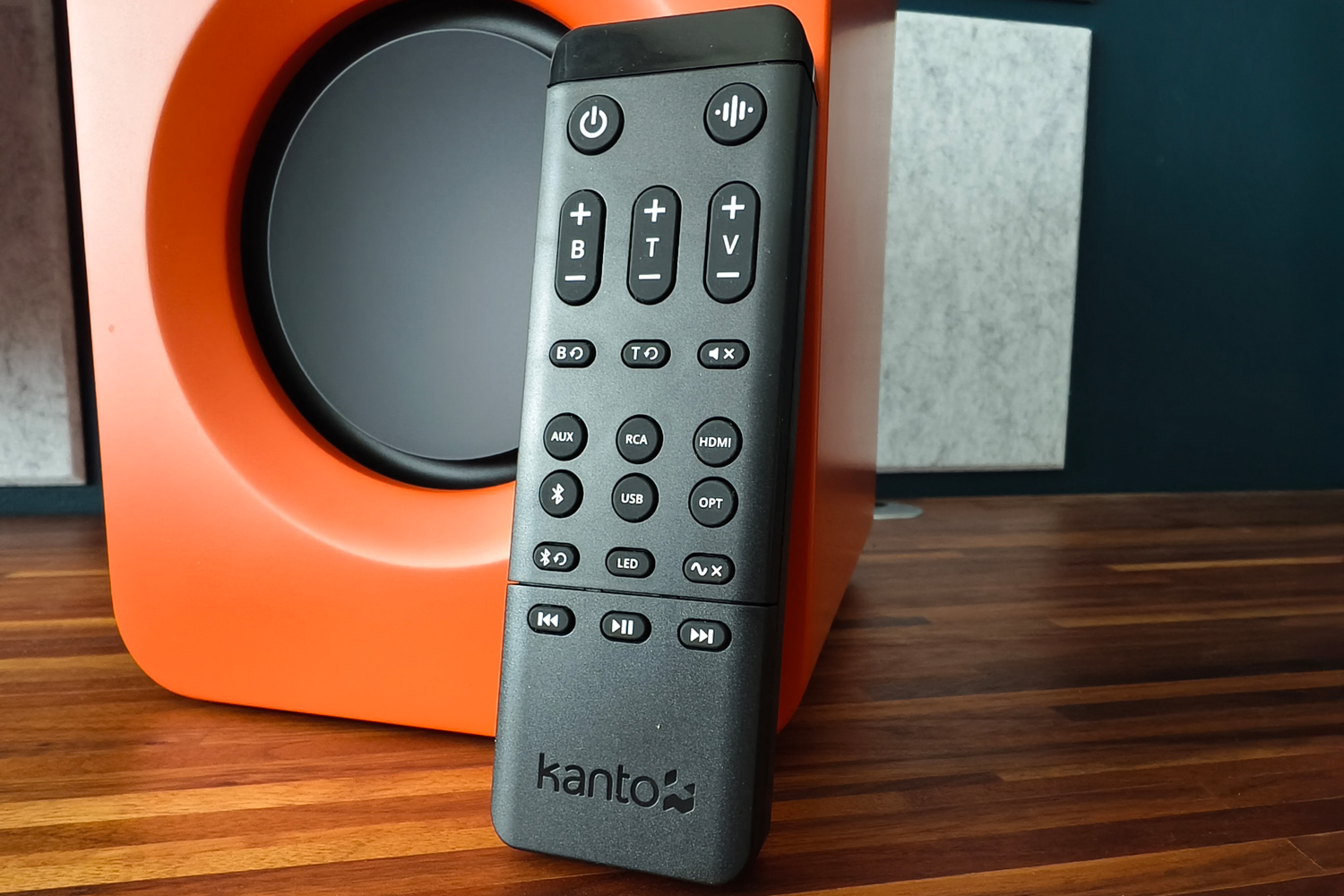
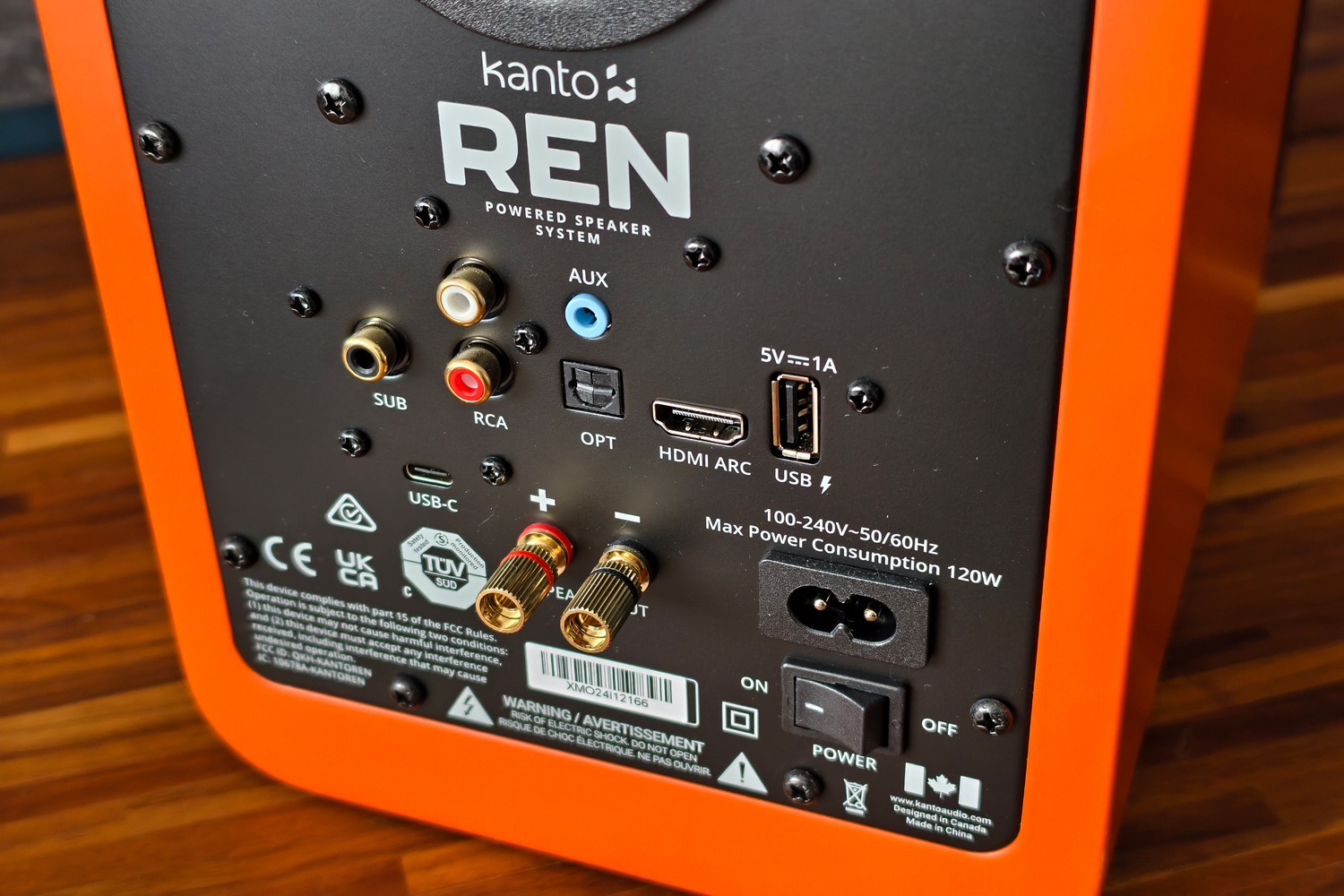
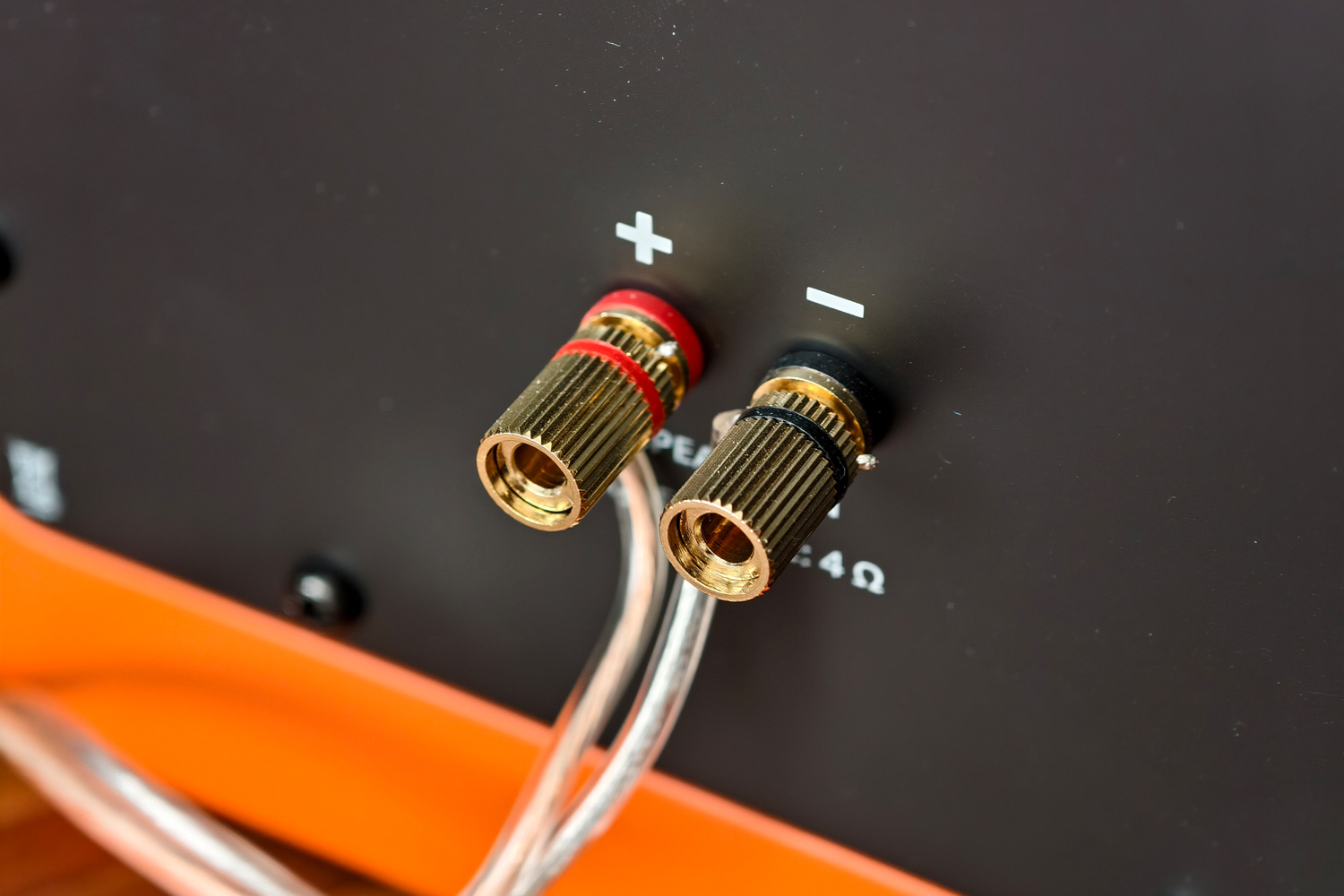
Speaker wire binding posts aside, you won’t find any connections on the passive unit; it’s all at the rear of the active speaker, which helps keep cable clutter to a minimum. Doubly so because you can swap the left and right channels, rather than being forced to always have the active unit on a certain side.
There’s the usual 3.5mm auxiliary, RCA connection for hooking up a turntable (as long as it has a built-in phono pre-amp), and digital optical inputs, plus USB-C for digital playback from a PC. Plug a separate subwoofer into the dedicated port and the speakers will automatically redirect everything below 80Hz, no settings changes required. The USB-A port for charging your other tech is a neat addition, too.
Arguably the most useful port? HDMI. Hook these speakers up to your TV and they’ll pump out audio from anything hooked up to it – say a games console, set-top box or Blu-ray player – thanks to Audio Return Channel (ARC). Consumer Electronics Control (CEC) then lets you control the volume with your TV remote. An auto-wake function turns it on with your TV, too. You’d take this all for granted in a soundbar, but the inclusion here makes the Ren a true multi-purpose system.
Wireless connectivity is solely via Bluetooth 5.3, with just the basic AAC codec. If you want hi-res listening, it’ll need to be from a wired source.
With no companion app to complicate things, swapping sources is handled through the chunky remote control. It has buttons for each, along with bass and treble adjustment, playback controls, and an EQ toggle for activating the vocal boost and night modes. It would’ve been nice if you didn’t have to supply your own AAA batteries, though.
Sound quality: full bodied
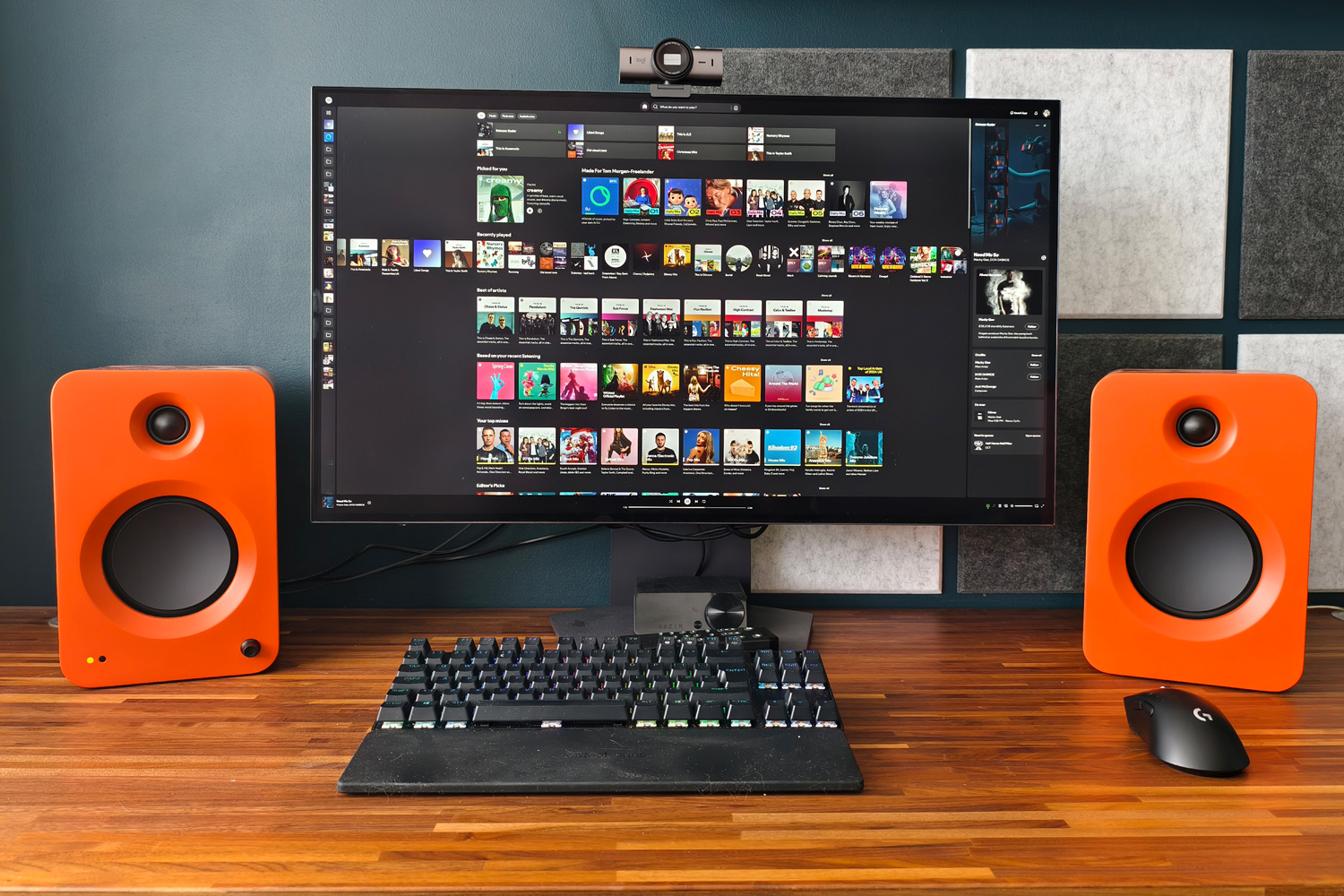

Each Ren speaker has a single 1in silk dome tweeter and 5.25in main driver, powered by 100W RMS (200W peak) of class D amplification. That proved to be more than enough oomph during my testing – a mix of music, films and games using HDMI to my TV, Bluetooth to my phone, USB-C to a laptop and RCA to a turntable.
It won’t come as a shock that the REN brought a whole new level of depth and dimension to movies and streaming shows compared to my TV’s built-in speakers. There was a generous amount of low-end, while the mid-range clarity was superb for the money. It doesn’t have the precision or impact of a separate subwoofer, but you could always add one later if you like. The vocal boost is there if you need it for shows where the actors mumble a lot, but I rarely needed it.
You get true stereo separation here, not the phoney kind you get with many soundbars. With several more feet of space between the speakers than my usual soundbar setup, everything sounded so much wider and expansive, albeit without any surround sound effects. Consider if you’re used to Atmos effects like I am before replacing an ageing surround setup with these.
Relocating the Ren to my office desk, they continued to impress with rich details, clean treble and ample volume. The bass on Mackie Gee’s Need Me So was satisfyingly squelchy, without the main driver overwhelming the tweeter as it handled the percussion. That the driver size, and the type and amount of amplification, help them outperform cheaper powered pairs like the Ruark MR1 MkII isn’t a huge surprise. I also put them ahead of many mini-systems, including the more expensive Orange Pyramid Audio System.
I largely left the EQ settings at their defaults, as dialling up the bass too much would start to detract from the rest of the mix, and few of my test tracks benefited from any extra treble. Kanto’s sound engineers have found a great middle ground that suits a whole range of genres.
Kanto Audio Ren verdict
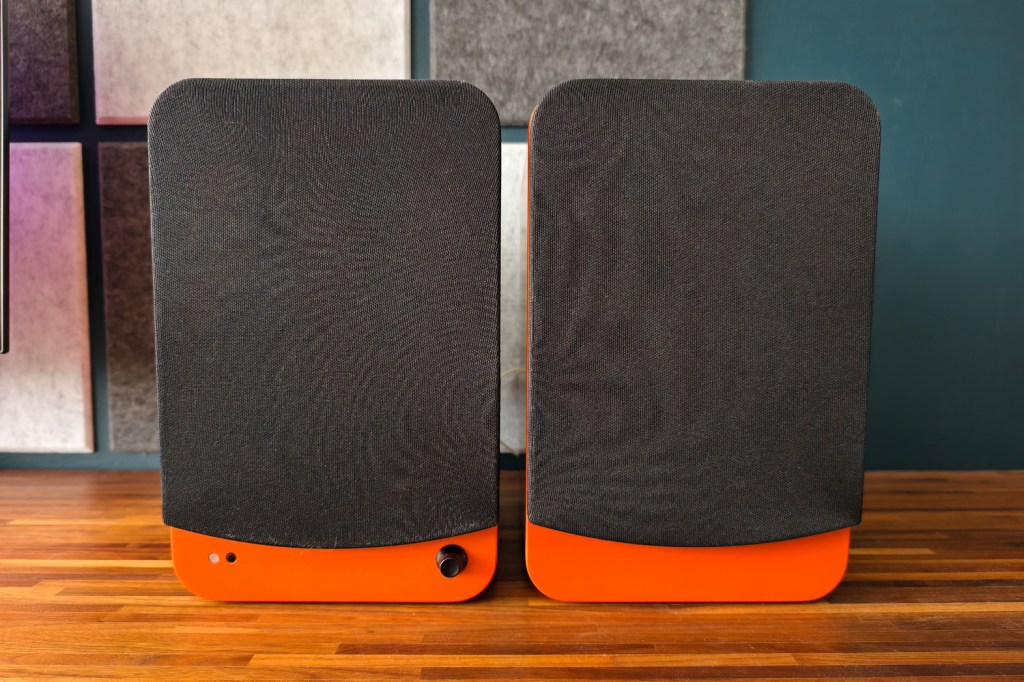
It’s rare that multi-purpose Hi-Fi kit can compete with the specialist stuff – but the Kanto Audio Ren pulls that feat off very neatly indeed. They’re just as comfortable flanking your TV as they are your turntable, with impressively impactful audio that’ll embarrass many soundbars – and blow away any screen’s built-in speakers. They’ve got the wired and wireless connections to cope with more than just beginner-grade separates, and importantly they look the part as a stereo pair, no matter where you put them.
Sure, you’ll be giving up surround sound by going for these in your living room instead of a dedicated home theatre system. Adding a separate subwoofer can get expensive, too. But those are minor quibbles for what’s otherwise a very accomplished system.
If you’re only looking for desktop speakers and have no plans to plug in a telly, it makes sense to shop around: a Ruark MR1 MkII and Kanto’s own YU6 are both easier on the wallet. But for maximum flexibility, these are well worth your attention.
Stuff Says…
These bookshelf speakers have TV-friendly connectivity and can outshout most soundbars. The Kanto Audio Ren also look sharp on a desk, and are equally dynamic as a stereo pair.
Pros
Engaging, entertaining stereo sound
Lots of connectivity options for TV and Hi-Fi
Sleek stylng stands out from other bookshelf speakers
Cons
You forego surround sound with these hooked up to your TV
Adding a subwoofer brings extra expense
No hi-res Bluetooth codecs
Kanto Audio Ren technical specifications
| Drivers | 1x 1in silk dome tweeter, 1x 5.25in main driver (per speaker) |
| Amplification | 200W (Class D) |
| Wired connectivity | HDMI eARC, USB-C, digital optical, RCA, 3.5mm |
| Wireless connectivity | Bluetooth 5.3 |
| Dimensions | 179x215x277mm (each) 4.5kg / 3.5kg (active/passive speaker) |



